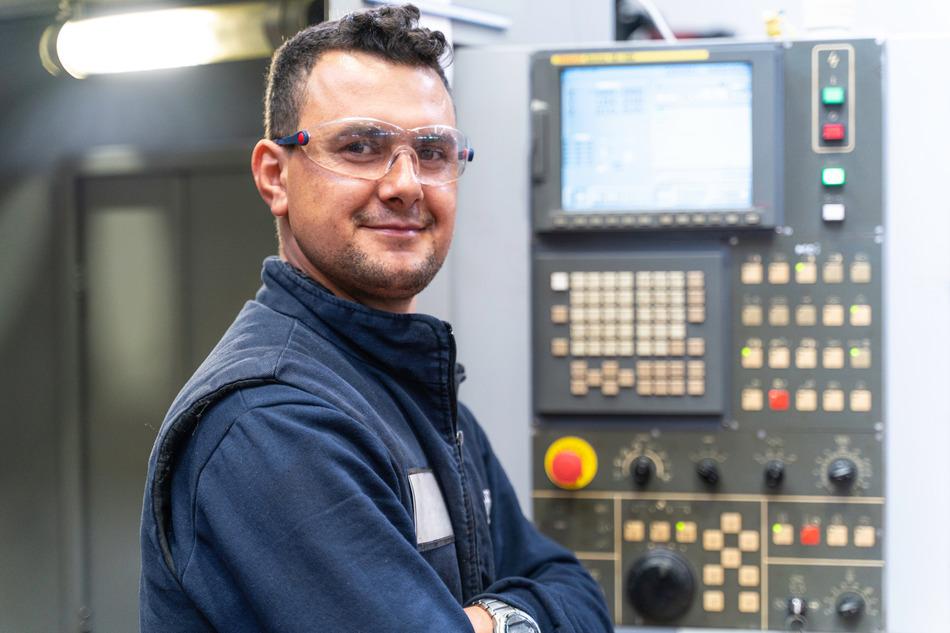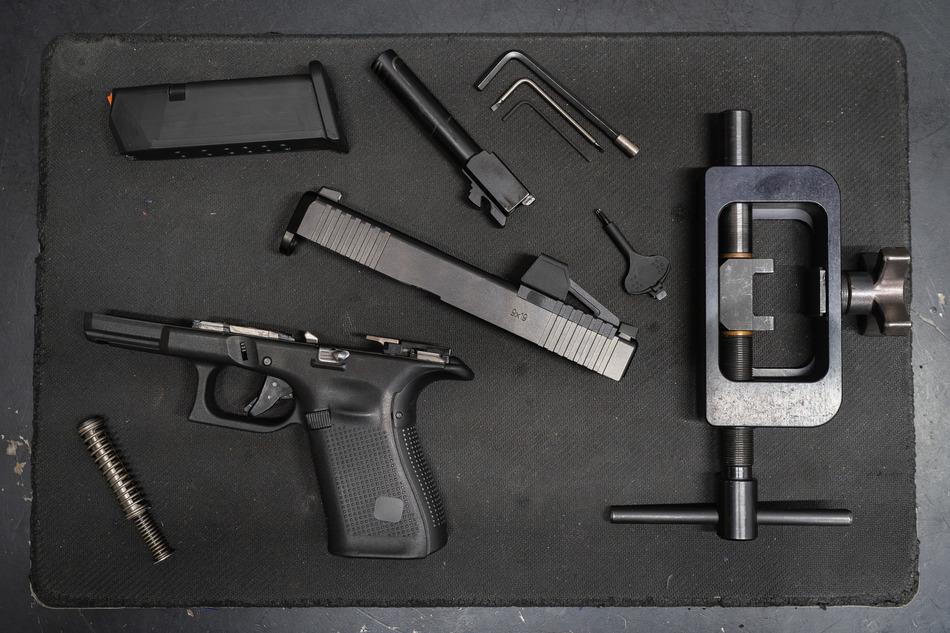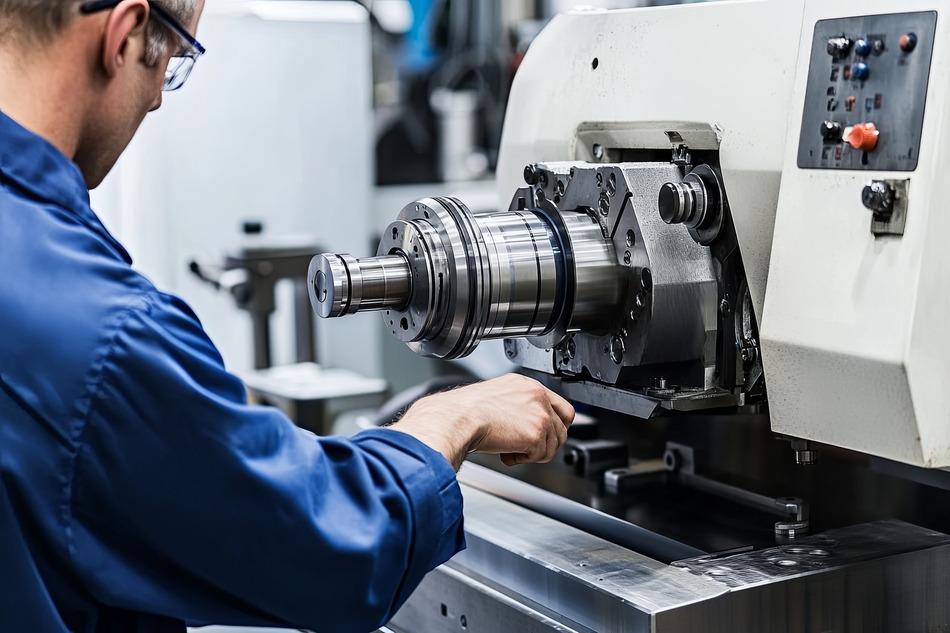What Is a CNC Lathe Turret & How Does It Work?
When you’re operating a CNC lathe, speed, precision, and consistency are everything. And at the heart of that efficiency is the turret. A CNC lathe turret securely holds multiple machine tools—like drills, taps, or turning tools—at once and rotates automatically between them to perform different operations in a single machining cycle. This eliminates the need to stop for tool changes.
Why Does This Matter?
Whether you’re running high-volume parts or working with complex geometries, the turret makes it possible to hit tight tolerances without sacrificing speed. It’s a key component that directly influences part quality, production timelines, and tool wear.
Whether you’re a production lead or a maintenance tech, understanding the turret’s role is essential to keeping your machine operations running smoothly.
What Is a CNC Lathe Turret?
A CNC lathe turret is a rotating tool holder mounted on the lathe. It holds several tools—like drills, boring bars, and turning tools—so the machine can switch between them quickly during a job.
Instead of stopping production to load a new tool manually, the turret rotates to the correct station. This allows for multiple tool machining operations (like roughing, finishing, and threading) in one setup.
Turrets are a core feature of most CNC turning centers and live tooling lathes, allowing for multi-step operations to happen automatically.
How a CNC Lathe Turret Works
Most turrets are powered by a servo motor or hydraulic system. When the CNC program calls for a tool change, the turret rotates to the right station, locks into place, and machining continues. Some lathes have:
- Axial or radial tool mounting depending on machine design
- Live tooling, which allows tools to rotate for milling or drilling operations
- Y-axis movement for extra flexibility in complex part geometry
Turrets must align precisely with the spindle. If they’re off even a little, tool wear increases and part quality suffers. That’s why turret alignment, backlash prevention, and routine checks are essential for top-tier performance.
Benefits of CNC Lathe Turrets
Adding a CNC turret to your machine setup isn’t just about speed—it’s about improving flexibility, repetition ability, and reducing the need for constant operator intervention. A well-maintained turret system allows for faster cycle times because there’s no need to manually change cutting tools between cuts. It also improves repetition ability by machining every part with the same tool positions and consistent alignment. With fewer manual steps involved, there are fewer chances for operator error or setup mistakes.
Turrets also enable more complex part production by allowing turning, drilling, and milling in a single setup, which increases efficiency and reduces the need to transfer parts between machines. Finally, a functional turret reduces the workload on your team, letting operators focus on performance monitoring rather than swapping tools. When properly calibrated and maintained, the tool turret becomes powerful for increasing output without sacrificing precision.
Common Signs of Turret Issues
Over time, CNC lathe turrets can develop issues, especially in high-use environments. One of the first signs of trouble is indexing problems, where the turret doesn’t rotate smoothly or stops at the wrong station. You may also notice loose locking, where the turret fails to secure itself firmly in place before cutting begins. Another red flag is tool misalignment, where tools don’t line up properly with the spindle or cutting path, leading to inconsistent performance.
Unusual sounds such as clicking, grinding, or vibration during tool changes or operation often point to internal wear or damage. In some cases, you may see a decline in part finishes, including inconsistent surface quality or drifting tolerances. These are all early signs that your turret may need service, and addressing them quickly can help prevent more serious repairs and production delays.
Turret Maintenance Tips for Long-Term Performance
Keeping your turret in good shape starts with consistent maintenance. One of the easiest but most important habits is to keep the tool stations clean. Chips, coolant residue, and grime can build up quickly and interfere with turret performance, so regular cleaning of the turret face is essential.
It’s also important to check turret alignment often. Even a slight shift can cause inaccurate designs, so using dial indicators or laser alignment tools is highly recommended. Lubrication plays a key role as well. Always follow the manufacturer’s schedule and use the correct type of grease or oil to prevent wear.
Inspect locking mechanisms frequently to make sure the turret fully engages during machining—this avoids tool slippage or vibration. Operator training also remains essential and should not be underestimated. A properly trained operator can identify early warning signs of wear or misalignment, which makes a big difference in preventing downtime. Like any other high-precision component, proactive maintenance keeps your turret performing consistently and extends its lifespan.
When to Repair or Replace a CNC Lathe Turret
Not every turret lathe issue requires a full rebuild or replacement. In many cases, minor repairs can restore functionality and save time. You may only need a simple adjustment if the machine experiences indexing errors infrequently and you can correct them easily. Similarly, if the locking mechanism is loose but still serviceable, or if the turret continues to hold tools securely and maintain alignment, a professional tune-up is often sufficient.
On the other hand, replacement or rebuild becomes necessary when misalignment is persistent and affects part accuracy.
If your team notices frequent tool crashes or repeated tool station errors, that’s a strong sign the turret needs more than just repair. Severely worn internal components like gears or bearings signal the need for a deeper overhaul. A detailed inspection by a repair expert can help you decide the best course of action—and in many cases, a well-executed rebuild can restore the turret’s performance and extend your machine’s service life by years.
Maximize Output With Proper Turret Setup
A CNC lathe turret can either be your biggest strength—or your biggest bottleneck. A properly aligned, clean, and functional machine cuts faster, reduces errors, and lowers the cost per part.
However, when the system is not performing correctly, the impact often appears in longer cycle times, increased scrap rates, and reduced spindle performance. Keeping your turret in good shape is essential for maximizing both quality and output.
Get Reliable Turret Service & Alignment Support
At In-House CNC, we specialize in turret diagnostics, alignments, and rebuilds. Whether you’re experiencing indexing issues or want a preventive inspection, our team can get your CNC machine back on track quickly and reliably.
📞 Contact us today at (951) 540-4820 to schedule turret service or learn more about optimizing your turning center performance.




